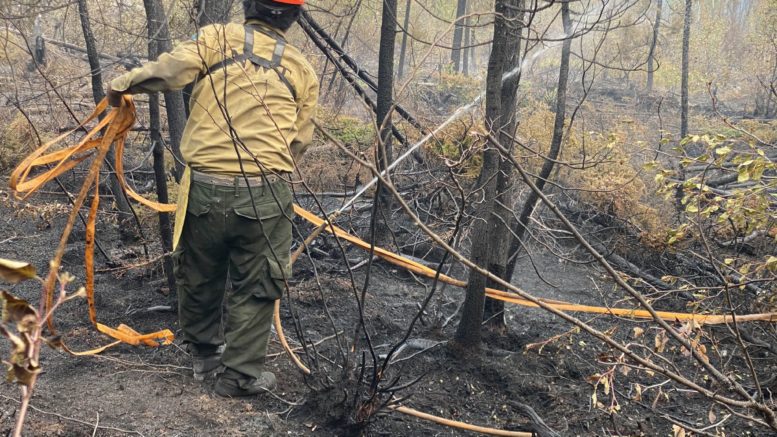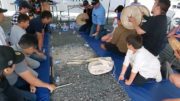After 11 days away from home, residents of Rae were finally allowed to return home this morning.
The Tłı̨chǫ Government announced on Wednesday evening that residents could return home just after 10 a.m. this morning, but power will not be restored until 2 a.m. this afternoon.
The community was first evacuated on July 24 due to wildfire. Nineteen buildings were destroyed and three were damaged in Rae and along Highway 3.
Residents of Edzo were given the green light to return home on Monday.
“People want to be home, but we also know there’s work ahead of us,” says Behchokǫ̀ Chief Clifford Daniels. This will include cleaning spoiled food out of fridges and removing ash from the windows and doors. “For a couple of days I think people will be pretty busy cleaning around the house,” he says.
“I’m very, very thankful, and also thinking about those who have lost everything. It is just good to be home, even though the state it is in and we’re in as a community.”
Daniels says the community is taking gradual steps to return to normal. These include the return of the RCMP and community health services, as well as the restocking of stores. “So that will ramp up and build up, and hopefully we’ll be fully operational within a week.”
Despite the lifting of the evacuation order, the fire that started on June 28 near the community rages on: At last estimate, the fire was more than 113,000 hectares in size.
Following the news, the GNWT issued several warnings to residents returning to the community. Fire crews, they said, are still at work along the highway, near the Frank Channel, and south of Rae; An Evacuation Alert will most likely remain in place for residents to leave at an hours’ notice; And damaged trees in the area pose a falling hazard.
The fire does not pose any threat to Yellowknife.
The 2023 wildfire season is now the second-worst of the past twelve years, surpassed only by the infamous 2014 season. More than 1.8 million hectares have been burned so far this year, while more than 3.4 million hectares were burned in 2014. That’s according to data from NWT Fire and the Canadian Interagency Forest Fire Centre.
This story will continue to be updated as it unfolds.
With files from Mariah Caruso.









